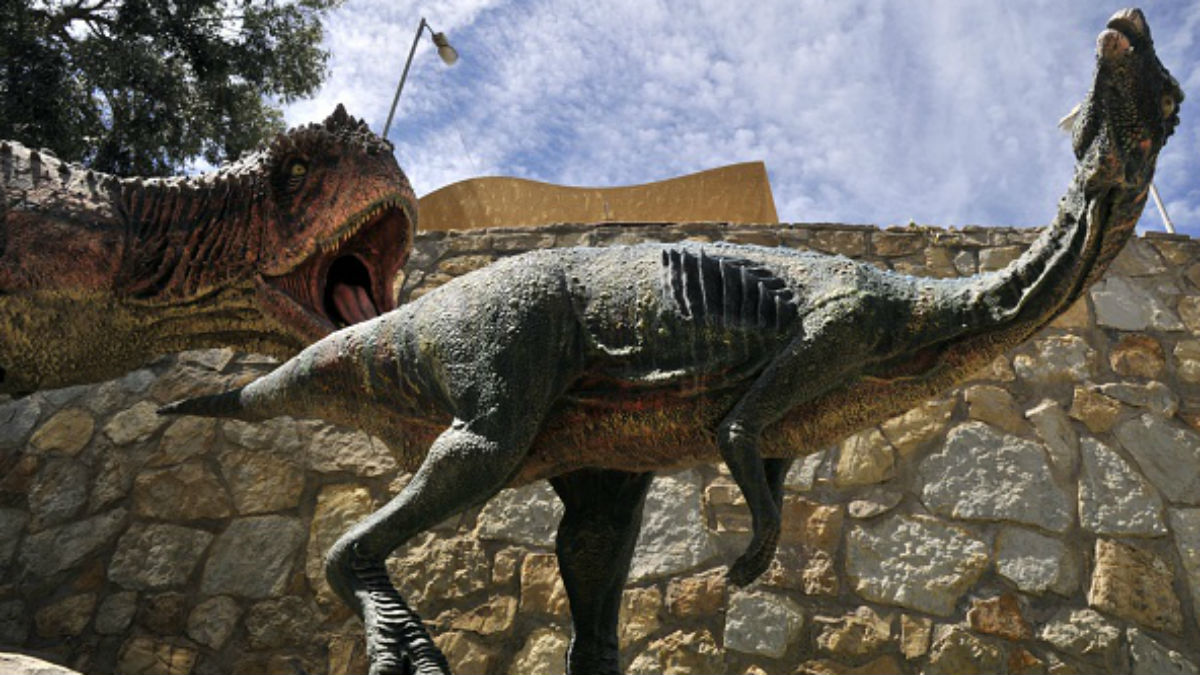Dinosaur footprint found in Bolivia among largest ever discovered
South American tour guide discovers giant print believed to have been made around 80 million years ago

One of the largest dinosaur footprints in the world has been discovered near the city of Sucre in central Bolivia.
Tour guide Grover Marquina came across the print earlier this month, some 80 million years after it was made, while researching a tourist route through the area, which is well known for fossil finds.
The footprint, which stretches four feet across, is among the largest ever discovered and the biggest of its kind to be found in South America. Tracks of a similar sizes have been uncovered in France and Argentina.
The Week
Escape your echo chamber. Get the facts behind the news, plus analysis from multiple perspectives.

Sign up for The Week's Free Newsletters
From our morning news briefing to a weekly Good News Newsletter, get the best of The Week delivered directly to your inbox.
From our morning news briefing to a weekly Good News Newsletter, get the best of The Week delivered directly to your inbox.
"This is one of the major findings of this type of print," local palaeontologist Omar Medina told AFP. Based on its size, the dinosaur who left it behind "must have had a height of about 15 metres [49ft]", he added: "It was big."
Argentinian palaeontologist Sebastian Apesteguia, who is overseeing investigations of the site, believes the footstep came from an abelisaurus. The bipedal predator is thought to have stood around 30ft tall on average so the new finding suggests the species could have been "much larger", he told La Razon.
From the shape of the track, it appears the dinosaur was moving from north to south, in the direction of northern Argentina, where several abelisaurus skeletons have been discovered.
The Sucre area is home to Cal Orcko, a prehistoric treasure trove that is in the process of becoming a Unesco World Heritage site. Its limestone cliffs bear the traces of thousands of dinosaur footprints dating from the Cretaceous era, which ended 66 million years ago.
A free daily email with the biggest news stories of the day – and the best features from TheWeek.com
-
 Political cartoons for January 4
Political cartoons for January 4Cartoons Sunday's political cartoons include a resolution to learn a new language, and new names in Hades and on battleships
-
 The ultimate films of 2025 by genre
The ultimate films of 2025 by genreThe Week Recommends From comedies to thrillers, documentaries to animations, 2025 featured some unforgettable film moments
-
 Political cartoons for January 3
Political cartoons for January 3Cartoons Saturday's political cartoons include citizen journalists, self-reflective AI, and Donald Trump's transparency
-
 How Bulgaria’s government fell amid mass protests
How Bulgaria’s government fell amid mass protestsThe Explainer The country’s prime minister resigned as part of the fallout
-
 Femicide: Italy’s newest crime
Femicide: Italy’s newest crimeThe Explainer Landmark law to criminalise murder of a woman as an ‘act of hatred’ or ‘subjugation’ but critics say Italy is still deeply patriarchal
-
 Brazil’s Bolsonaro behind bars after appeals run out
Brazil’s Bolsonaro behind bars after appeals run outSpeed Read He will serve 27 years in prison
-
 Americans traveling abroad face renewed criticism in the Trump era
Americans traveling abroad face renewed criticism in the Trump eraThe Explainer Some of Trump’s behavior has Americans being questioned
-
 Nigeria confused by Trump invasion threat
Nigeria confused by Trump invasion threatSpeed Read Trump has claimed the country is persecuting Christians
-
 Sanae Takaichi: Japan’s Iron Lady set to be the country’s first woman prime minister
Sanae Takaichi: Japan’s Iron Lady set to be the country’s first woman prime ministerIn the Spotlight Takaichi is a member of Japan’s conservative, nationalist Liberal Democratic Party
-
 Russia is ‘helping China’ prepare for an invasion of Taiwan
Russia is ‘helping China’ prepare for an invasion of TaiwanIn the Spotlight Russia is reportedly allowing China access to military training
-
 Interpol arrests hundreds in Africa-wide sextortion crackdown
Interpol arrests hundreds in Africa-wide sextortion crackdownIN THE SPOTLIGHT A series of stings disrupts major cybercrime operations as law enforcement estimates millions in losses from schemes designed to prey on lonely users